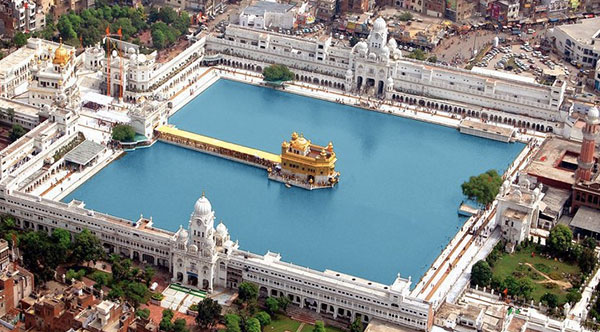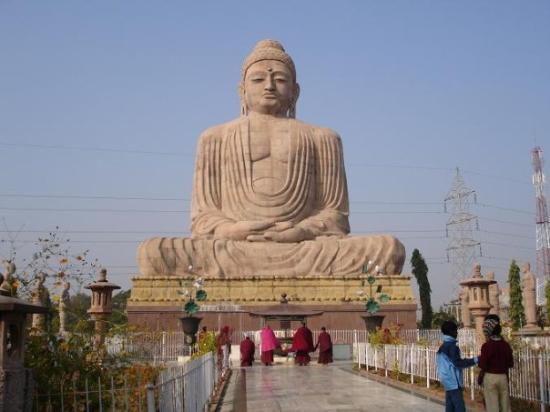Continuing our Spiritual tour through Dwarka in the West, Amristar in the North and finally Kamakhya in the East. We'll also make a stopover in Gaya (too late to attain Enlightenment?)
In the last blog of this new series on Spiritual Tourism we left off at Amaravati. Lets continue the tour alphabetically and head straight to Amritsar. Keep the following map handy

source
#3: Amritsar

source
- Literally a “Pool of Nectar”
- Centre of Sikhism and the site of the Sikhs’ principal place of worship.
- Name from Amrit Sarovar, the holy tank that surrounds the fabulous Harimandir Sahib aka Golden Temple
- City was founded by Guru Ram Das Ji, the 4th Sikh Guru, in the year 1577
- Early name of the city was Chak Guru
- Places of Interest: Wagah Border, Jallianwala Bagh
- Historic Importance:
- A city of historic walls and impressive gateways
- Importance under the reign of Maharaja Ranjit Singh
- City lies on the Grand Trunk Road, Asia’s one of the oldest built by King Sher Shah Suri in the year 1539.
- Arts and Craft
- Woollens, carpets and blankets
- Cut-glass work, bangles and embroidered stuff <like Phulkari embroidery which has GI tag>
- Also home to various Takias (A sufi convent) & Khankahs (A retreat designed specifically for gatherings of a Sufi brotherhood to meet, reside, study, and assemble and pray together as a group in the presence of a Sufi master)
#4: Dwarka
source
- One of 4 sacred Hindu pilgrimage sites (Chaar-dham) as per Shankaracharya
- One of 7 most ancient religious cities in the country
- Known for being the centre of Dwarka Kingdom, the ancient kingdom of Lord Krishna
- Underwater Study on the coastal water of Dwarka conducted by the ASI revealed the existence of a city dated to the 2nd millennium BC
- Famous for Dwarkadheesh Temple (dedicated to Lord Krishna), which was built around 200 BC
- Mention in Indian epic literature in Mahabharata and Skanda Purana
#5: Gaya- a religious confluence

source
Gaya is situated on the Banks of Phalgu river <Phalgu river is a tributary of which famous river?>
- Center of Buddhism:
- Close proximity to famous Buddhist pilgrimage centre of Bodhgaya
- Lord Buddha attained enlightenment in Bodhgaya
- The UNESCO famed Mahabodhi temple is also at Bodhgaya <Ashoka laid the foundation stone>
- Projected to the world by Bimbisara the Fifth of the Shishunaga dynasty
- Note: Gaya also finds a mention in the great epics of Ramayana and Mahabharata; like Dwarka
- Center of Hinduism:
- Famous as a site of Hindu tourism for ‘pind-daan’
- Large influx of visitors for the month long ‘Pitra Paksh‘ mela annually
- Center for Islam
- Largest mosque in Bihar, the Jama Masjid. is also located in Gaya
- There are numerous Jama masjids in India- the most famous being in Delhi made by Shah Jahan in Red Sandstone
- Largest mosque in Bihar, the Jama Masjid. is also located in Gaya
#6: Kamakhya Temple
source
- Center of Tantric and shakti cults of Hinduism
- Sitting atop Nilachal Hills, overlooking river Brahmaputra in Assam
- Inscription of Allahabad pillar of Samudragupta mentions Kamakya Temple
- Amongst the 51 Shakti Peethas related to the cult of Sati (name comes from the myth that there are 51 pieces of Sati’s body scattered across the Indian subcontinent, and Kamakhya is one of them), and Shakta temple
- Kamakya devi is also known as The menstruating goddess.
- Famous Ambabuchi Mela is celebrated as the annual mela of Kamakhya Temple.
No comments :
Post a Comment